Introduction
The Atomic Backland XTD 120 is new for the 2024 season. Atomic's Backland lineup is big, ranging from the (size 26.5) 780g, 70 flex) Backland Ultimate and now to the XTD 120 which comes in at 1382g and a claimed,120 flex.
The XTD 120 (or XTD for short) attempts to bridge the gap between the large numbers of skiers who want either a inbounds-biased boot or those who just want a pure touring focused boot. Let's say you do a reasonable tour (1500m+ vertical). Let's say you then have to ski through some demanding terrain to get out; this could be a ski area with chopped up snow, or tight trees, or sketchy logging road. You want something that will let you tour up comfortably, yet also exit without you getting destroyed. The Backland XTD 120 may therefore be the boot for you.
Reviewed here is the highest end carbon-infused polyamide Backland XTD model with the stiffest 120 flex. It is also the model with gripwalk to allow for use on GW-compatible MNC (multi-norm compatibility) designated bindings. There are also Backland XTD 115, 100, and 95 variants with different stiffnesses, less-expensive materials (no carbon, PU and Grilamid plastics) and different sizings.
MSRP is Can $1,000 with sizes from 24 to 30.5. If you have smaller feet your options are the Backland XTD 115 Womens which goes down to sz 22.
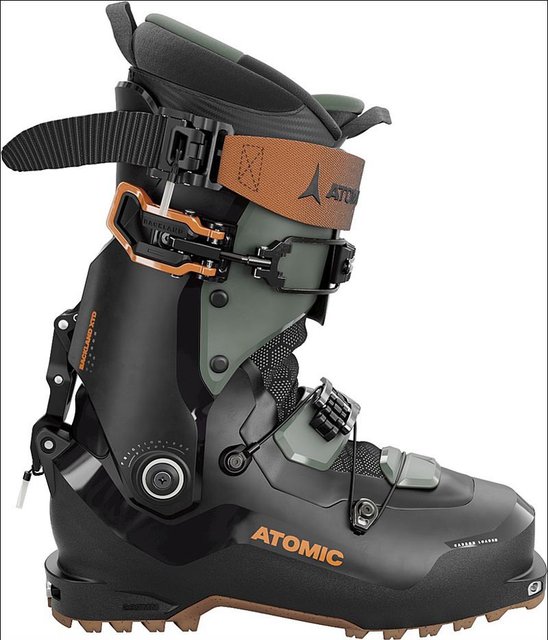
Atomic Backland XTD 120
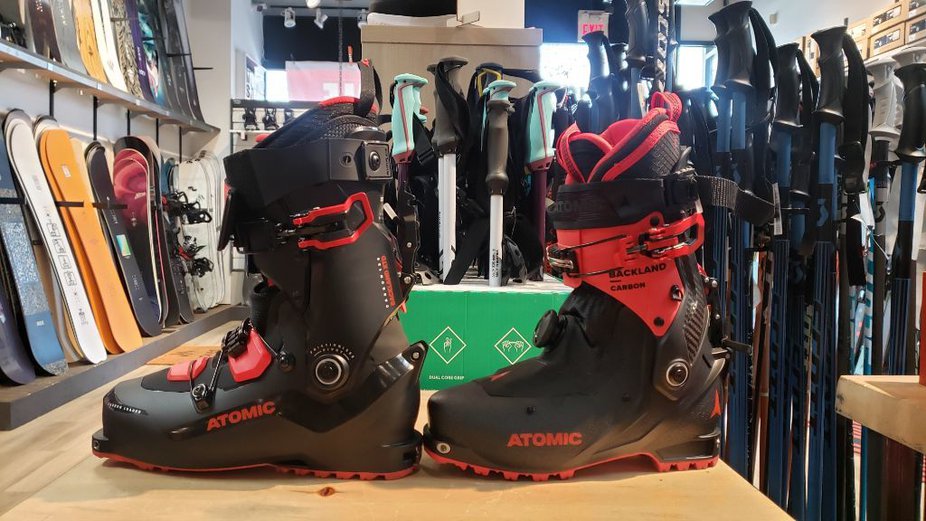
Backland XTD 120 vs "original" Backland Carbon (remains unchanged). Backland XTD is heavier (1451g in size 26.5 vs 1146g) but stiffer than the Backland Carbon (admittedly subjective 120 vs optimistic 110 flex)
About the reviewer
At just 160 pounds I'm not big but do spend 90+ days a season skiing, with many of those days in backcountry. I had 38 days on the XTD 120 (bsl 297mm); 13 of which were a mix of resort/touring and 25 of which were touring.
Reviewed here is the Backland XTD 120 in size 26.5 although I took many pictures of a size 27.5. I used the XTD 120 on a variety of skis ranging from an Atomic Backland 100 180cms length) all the way to a relatively stiff, beefy Foon Tyfoon 112 (186cms length). I currently ski on the Tecnica Zero G Tour Pro, (older review linked- skiing the prototype 2024-5 version), a Atomic Hawx XTD v1, a Dynafit Hoji ProTour and a Scarpa F1 but have had experience with a wide variety of boots. If you have questions about one boot versus the other please ask away.

Tecnica ZeroG Tour Pro 130 (my personal dedicated touring boot) vs Backland XTD. The Backland shell and liner are slightly taller. The Tecnica ZGTP weighs 1326g; Backland XTD 120 weighs 1392g. XTD 120 shell 26.5 weighs 1107g. Liner weighs 285g, which is 35g more than Intuition ProTour liner
Quick stats
Matt Manser of Atomic is the boot-savant of Atomic. Via a thread on the TGR forums discussing the Backland XTD 120, he delivered this brain-dump
• Imagine a Hawx Prime with 74° of better-than-Backland cuff ROM, a 120 flex and a full rubber touring norm sole (or GripWalk if you want).
• 1390g / 26.5
• 100mm, medium volume last (based on Hawx Prime)
• Same cuff height (front & rear) as Hawx Prime
• New lower shell construction blends an overlap & open-throat construction together for the best of easy on/off and foot wrapping
• Frictionless “Mirror” Pivots deliver a more free-gliding cuff than Backland (they are symmetrical & parallel in their orientation)
• New ski/walk mechanism allows for 3 forward lean settings (no flip chips) 13°-15°-17°
• Available as a touring norm ISO 9523 boot or as GripWalk (it’s not swappable, just made either way)
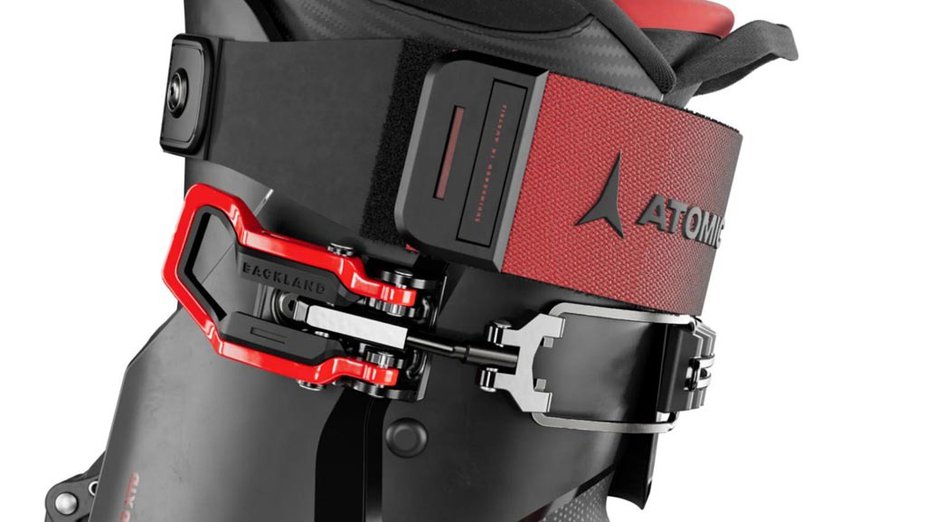
This is a two buckle boot with a velcro powerstrap and micro-adjustable forefoot buckle on upper cuff.
Construction
The Backland line of boots are your standard two-piece alpine touring boot with cuffs and lower shells joined by a bushing at the ankle pivot, further married with a walk mode lever. The XTD 120 features (expensive) Carbon-Loaded Polyamide; basically a carbon-infused plastic material on the boots upper and lowers. Less expensive Backland boots feature polyurethane (PU) and/or standard non-carbon infused PA for the cuffs and lower shells.
The upper shells have some design features to promote stiffness in addition to using carbon PA. The "Energy Backbone" are external ribs designed to stiffen the uppers. The familiar Atomic "Powerwalk" mechanism is shared with the Hawx XTD freeride boot and is appropriately beefy. New for this year the Backland XTD series can be adjusted to 13 - 15 - 17 deg forward lean via an external chip.
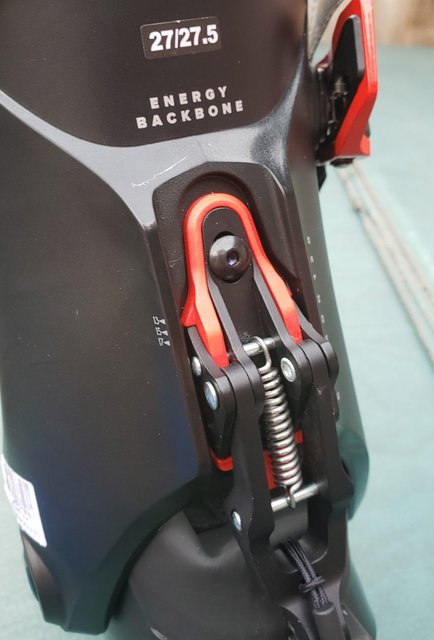
Closeup of the Atomic "Powershift" forward lean mechanism. Backland XTD comes stock at 15 deg forward lean. Simply loosen the allen bolt to slide the hardware up or down to switch angles. Remember to reassemble with lots of loctite. Also pictured is the external construction of the "Energy backbone "
The lowers are where a lot of design magic is happening. It isn't a tongue system where there's an open hole in the lowers covered by a touring tongue. It isn't also the overlap system used by the Hawx XTD where two layers of shell material overlap. Instead there's a partial opening over where the tongue design usually would have a hole, which is covered by a textile gaiter. Two pieces of shell material are built under the cables and buckles of the lower shell. The goal of this design is to achieve a compromise and balance between tongue (better for touring range of motion) vs overlap (better for tuning for downhill performance stiffness).
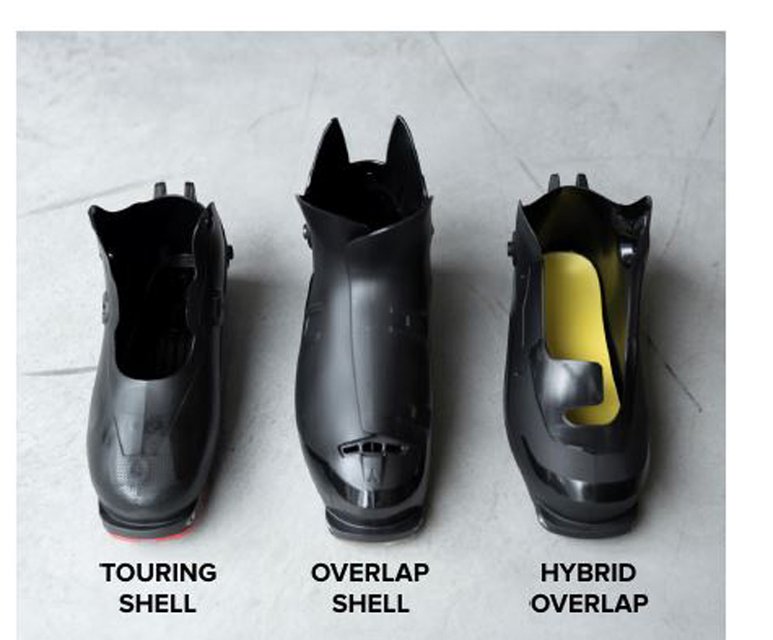
The Backland XTD uses a hybrid overlap method of construction. This essentially adapts a "touring" open-throat design (think of touring boots with tongues ala Dynafit Vulcan, Dalbello, Raichle etc) combined with more "alpinish" overlap shell construction (think of Atomic Hawx, K2 etc.
Hybrid overlap design plays into the Backland XTD's cross lace system. Cross lace is a single closure cable system somewhat derivative of their older Backland boots. In combination with their hybrid overlap design cross lace gets foot and ankle hold by lacing the adjustment system through the lower buckle thereby providing an even sense of lower closure when readying the XTD 120 for downhill. Another advantage is that it allows for quick transitions through the one buckle.
The front of the Backland XTD does not have a tongue as did the older versions of Backland (and Backland Carbon). Instead, as did the Backland UL, there is a water sealing textile gaiter surrounding the liner going all round the leg. It's intended to keep snow/water out which range of motion. Therefore when you step into the Backland XTD the recommendation is to put the liner in the boot then step in. If you first put on your liner then step into the boot racer-style, there's a good chance that you press the gaiter down into the shell.
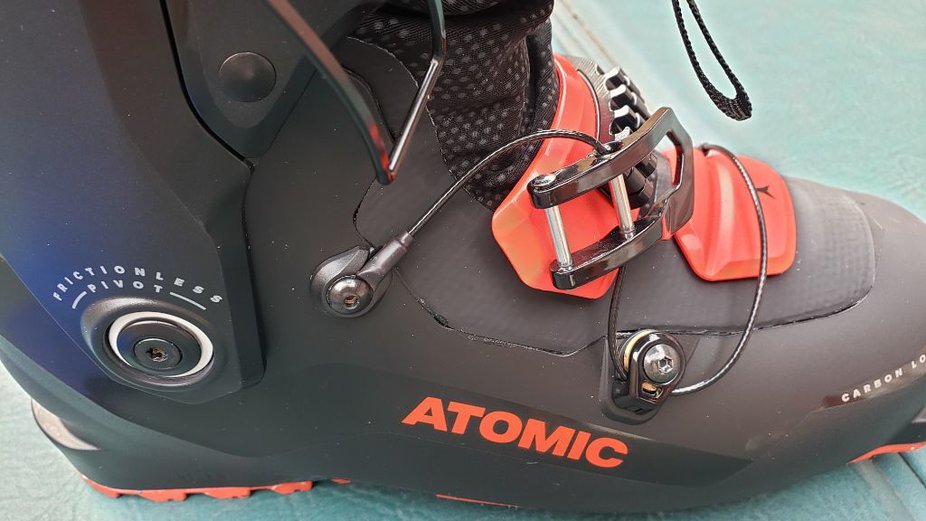
The lower shell is where it gets interesting. Here Atomic uses the CROSS LACE 2.5 system. This closure system is designed to wrap the complete lower foot using a cable and buckle cinch system. Note too the fabric gaiter intended to keep water/snow out.
Most of the Atomic hardware is fastened with allen bolts. I checked and they had plenty of loctite; something that one shouldn't take for granted. The XTD 120 uses high-quality pivot bushings, the same as with the Atomic Hawx v1. Note however in the "Performance" portion of this review where I had excessive bushing play after 30+ days of skiing as well as the fix..
At point of purchase you can get either a touring full-rubber sole or a Gripwalk sole (pictured below). You can't swap them out later.
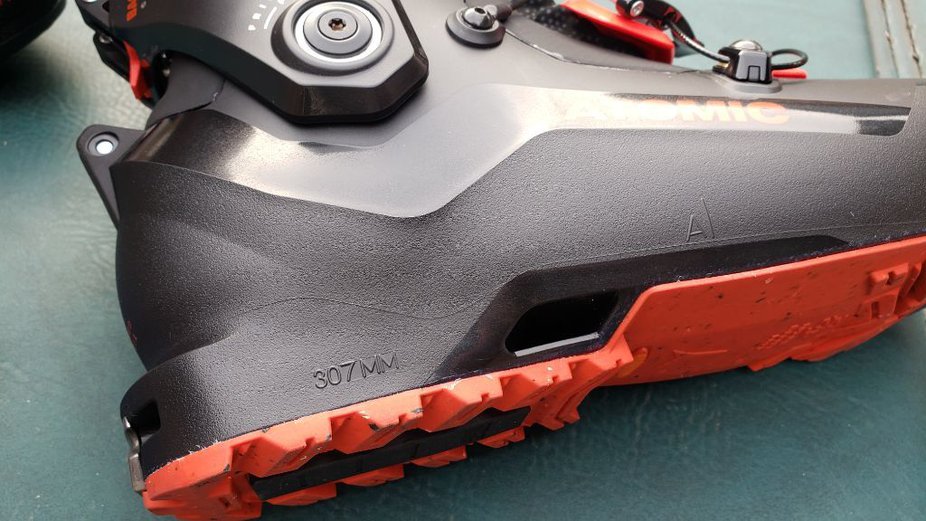
Note the marvelous low friction IGUS polymer "friction-free" bushings. Combined with the hybrid overlap design which allows for a free floating stride you get a theoretical 74 degrees of stride; very nice for touring
Fit
This “Fit” description will never replace the usefulness of the advice of an experienced bootfitter, nor is it designed to do so. The fit of any boot is the deciding factor and since everyone’s feet are different, I highly recommend visiting a bootfitter before settling on a boot.
I have a generic Azn foot - wide and flat. I have almost no arch, a big "sixth toe" tumour on the metatarsal, a splayed out forefoot; meaning I need to somehow get 110mm of forefoot into a 98mm last (26.5 size) and an average sized ankle and instep. As another fitting data-point I am a size 26 in Tecnica, Atomic and Salomon. The Backland XTD 120 is based on Atomic's Prime last which means it's better for wider feet (as opposed to "Ultra" for narrower). "Prime" worksfor me; but less perfect for narrow feet. All that said, the Backland XTD is on the larger sider of a medium volume foot. If you're a low volume foot then don't even bother; there'll be too many fit compromises.
Out of the box the Backland XTD was a good fit with the stock liner having decent heel-hold, instep pressure as well as toe-space. I used the provided in-box volumizers to take up space. After 30 days the stock liners had packed out to the point that mid-way through a ski day I would be messing around with buckles and adjustments. I then went to my standard fix of replacing the stock liners with Intuitions which has the side benefit of dropping between 40 - 60g weight each boot. At first I tried a low-volume new Intuition Dual Density touring liner but this didn't take up enough volume. I then tried a LV Intuition ProTour with the same result and finally settled on a MV ProTour which took up the needed volume.
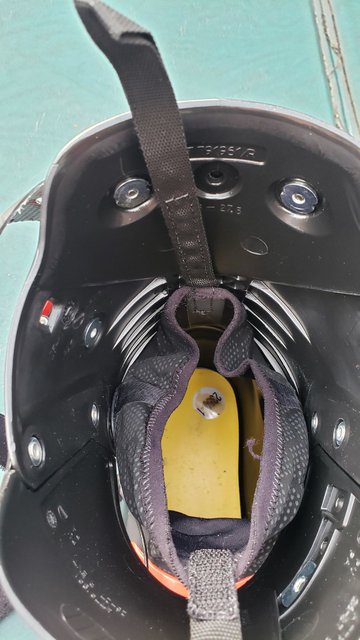
Interior of Backland XTD boot. See hardware attaching power straps and also the familiar fabric gaiter design shared with other boots of the Backland family to help prevent snow and moisture ingress. Also note the yellow removeable boot board which can be removed or ground down for more fit tuning
Of note the Backland XTD 120 retains Atomic's Memory Fit allowing the boot shell to be cooked in a special oven and then allowing foot pressure to then expand/mold both shell and liner to one's foot. I've already experienced the miracle of Memory Fit allowing expansion of 5mm in the boot shell and approx 5mm in the liner for my Atomic Hawx Ultra XTD.
With the Backland XTD, shell fit was fine so I confined my exercise to cooking the liner. Your dealer should have MemoryFit instructions but if they don't or you're doing some home-cooking remember that the Backland XTD has a drop-in boot board. Leave that in. Take the liner out of the shell and only heat the shells. Add the liner once the boots come out of the over. With Backland and Backland UL, there is a glued-in bootboard so leave the liner in the shell and cook both boots + liner at the same time.
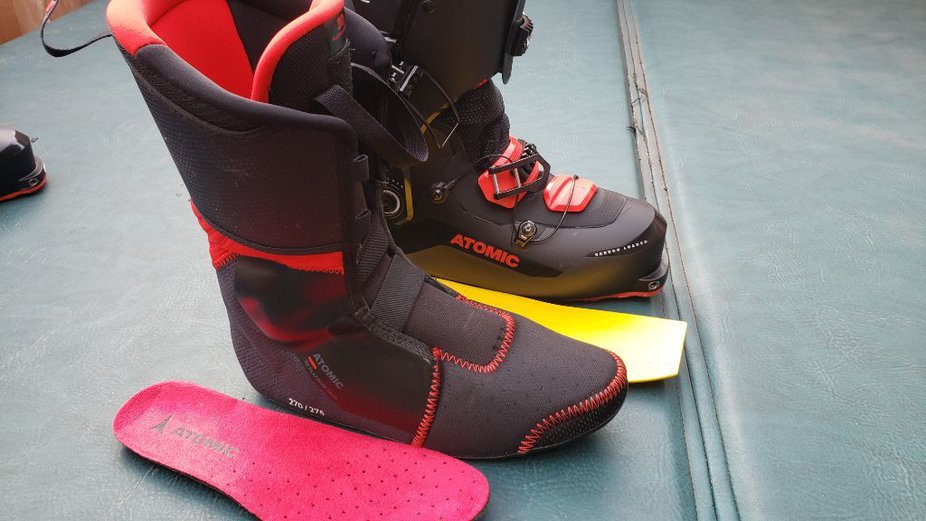
The Backland XTD "3D Platinum Tour" liner is heat-moldable, breathable and washable. It's got more substance and is consequently stiffer, and heavier than the liners in the other Backlands
Performance
Touring is where the Backland XTD 120 shines. The stride is almost friction-free, the ROM is superior. The boot rewards those with long strides. But one would expect all of this as what's anticipated of the Backland XTD 120 is how well it walks for a 1400g boot, not how well it skis for a 1400g boot.
Turning to skiing performance, the Backland XTD 120 was underwhelming. Simply put it lacks range. The boot has decent lateral stiffness which serves one well arcing turns in consistent snow. However, the forward support one would expect from a 120 stiffness boot isn't there. Hit challenging snow that slows/ arrests forward motion or get into situations where you're using shin pressure to get support and you'll find support up to a point then the boot will fold.
On the topic of support, the Backland XTD doesn't feel like a 120 flex boot. To me, it feels no more or less supportive than my Scarpa F1s, which is rated as a 110 flex boot. This also means that it skied best when paired with smaller, lighter skis. Although the Gripwalk sole meant that the Backland XTD 120 could be skied with larger skis on which I had Fritschi bindings(112mm underfoot 184cm Foon Tyfoons), the Backland's upper range bound of boot support meant that the ski pushed the boot past its limits fairly quickly.

Backland XTD 120 on what I called the Tour of Breakable Crusts in the Whistler backcountry.
There are some other issues worth noting.
- The Backland's gaiter isn't particularly waterproof. On slushy spring skiing days, you will get wet feet as the textile ships water
- After roughly 30 days of use, the boot developed play. On disassembly of cuff pivots I found that the bushings had worn. This was surprising as these are the same bushings used in my personal Atomic Ultra XTD 130 boots which have had 150+ days without play. Atomic has since provided a bushing kit which was easy to install and remedied the play. I'll update the review after another reasonable amount of ski days to report back.
All touring boots are about compromises but the 1300-1400g boot category is an especially difficult beast with so many good entries. While the Backland XTD 120 tours well its ski performance doesn't live up to billing. That is to say the Backland XTD 120 has the downhill range, comparatively speaking, of boots in the 1100g category. Such 1100g boots might have the same downhill range limitation of the Backland XTD 120 but they'd still be 300g per foot lighter.
The Backland XTD 120 is in a tough place. It tours well, but is not all that light, has a small downhill useability range (for the 1300-1400g boot category it is in) and when skiing in slushy conditions will get your feet wet. I'm struggling to say who this boot is for so will leave this review hanging, as is, and hope the comments will flesh out ideas.

Backland XTD bushings disassembled using a 15mm socket and torx wrench
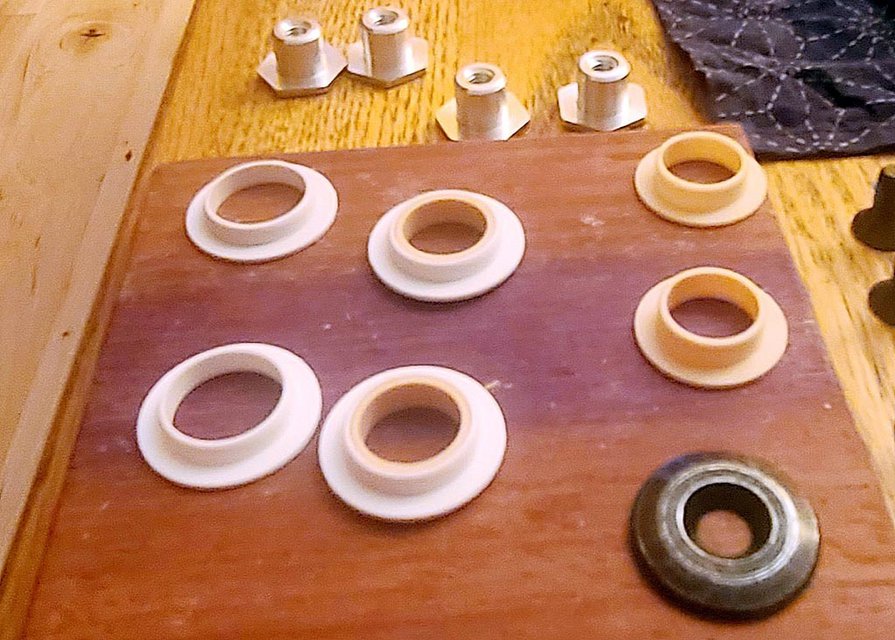
Atomic bushing kit

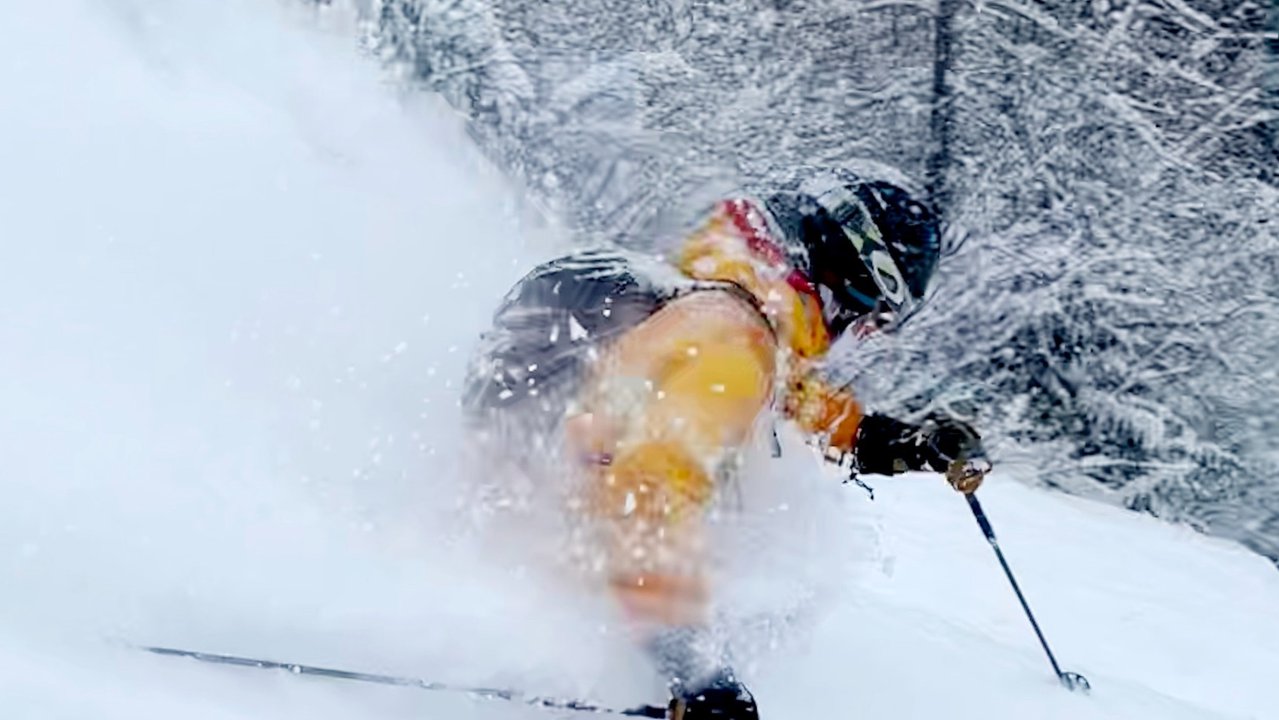
Comments